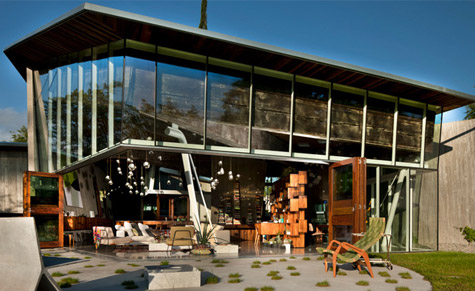
White Rock, a coastal city 45km south of Vancouver, is probably the last place you would expect to find a house that’s as starkly futuristic as the 23.2 House, but look closer and it soon becomes clear that there is a distinct context and reverence for the countryside.
The client, a reclusive candy manufacturing tycoon, first worked with the Vancouver-based architectural firm Omer Arbel Office (or, OAO) on a penthouse interior; and so pleasant was the working relationship on that project that when he purchased the White Rock property – essentially, an operating hay farm – the choice of OAO’s principal Omer Arbel as architect was a given.
Save for three conditions, the brief was open-ended. First, all interior spaces had to connect to exterior spaces. Second, the house had to be only single storey so as not to detract from the gravitas provided by the old growth forest on the land. The third condition was the overt incorporation into the house of a cache of gigantic, hundred year old Douglas fir beams that had been rescued from burned down warehouses.
Almost immediately, it became clear that the beams were the most important poetic engine for the project,' says Arbel,'not just because of our client's sentimental attachment to them, but also because of their strength as artefacts in their own right. Some of these were massive, over a metre deep, 30 metres long, and each milled from one enormous tree.
'It occurred to us that wood of this dimension is no longer available and that we should treat the beams as sacred objects. As such, we decided that we would not cut them or finish them in any way.'
This seemingly simple decision had tremendous ramifications. Because each beam was different from every other beam in terms of length, cross-sectional dimension and structural capacity, Arbel was forced to invent a geometry that would be able to accommodate tangents of different lengths while still being able to make legible domestic space.
The resulting triangular roof frames of 23.2 (the name is a cataloguing reference to the fact that this is the second version of OAO’s 23rd project) create pockets of intimate spaces that fold into internal rooms that, in turn, open into views of trees and pasture, while the whole 11-room structure drapes lightly over the gently sloping land. In the evenings, the house gives the impression of a floating lantern.
Receive our daily digest of inspiration, escapism and design stories from around the world direct to your inbox.
For the 5-year-old firm, the house is something of a watershed. It was a finalist for the recent World Architectural Awards. And, though it did not win, if OAO continues to produce works of such sensitivity, it could just be a matter of time.
By Daven Wu
Daven Wu is the Singapore Editor at Wallpaper*. A former corporate lawyer, he has been covering Singapore and the neighbouring South-East Asian region since 1999, writing extensively about architecture, design, and travel for both the magazine and website. He is also the City Editor for the Phaidon Wallpaper* City Guide to Singapore.
-
 New tech dedicated to home health, personal wellness and mapping your metrics
New tech dedicated to home health, personal wellness and mapping your metricsWe round up the latest offerings in the smart health scene, from trackers for every conceivable metric from sugar to sleep, through to therapeutic furniture and ultra intelligent toothbrushes
-
 Out of office: The Wallpaper* editors’ picks of the week
Out of office: The Wallpaper* editors’ picks of the week'Tis the season for eating and drinking, and the Wallpaper* team embraced it wholeheartedly this week. Elsewhere: the best spot in Milan for clothing repairs and outdoor swimming in December
-
 How Stephen Burks Man Made is bringing the story of a centuries-old African textile to an entirely new audience
How Stephen Burks Man Made is bringing the story of a centuries-old African textile to an entirely new audienceAfter researching the time-honoured craft of Kuba cloth, designers Stephen Burks and Malika Leiper have teamed up with Italian company Alpi on a dynamic new product
-
 The Architecture Edit: Wallpaper’s houses of the month
The Architecture Edit: Wallpaper’s houses of the monthFrom Malibu beach pads to cosy cabins blanketed in snow, Wallpaper* has featured some incredible homes this month. We profile our favourites below
-
 Explore the riches of Morse House, the Canadian modernist gem on the market
Explore the riches of Morse House, the Canadian modernist gem on the marketMorse House, designed by Thompson, Berwick & Pratt Architects in 1982 on Vancouver's Bowen Island, is on the market – might you be the new custodian of its modernist legacy?
-
 Cosy up in a snowy Canadian cabin inspired by utilitarian farmhouses
Cosy up in a snowy Canadian cabin inspired by utilitarian farmhousesTimbertop is a minimalist shelter overlooking the woodland home of wild deer, porcupines and turkeys
-
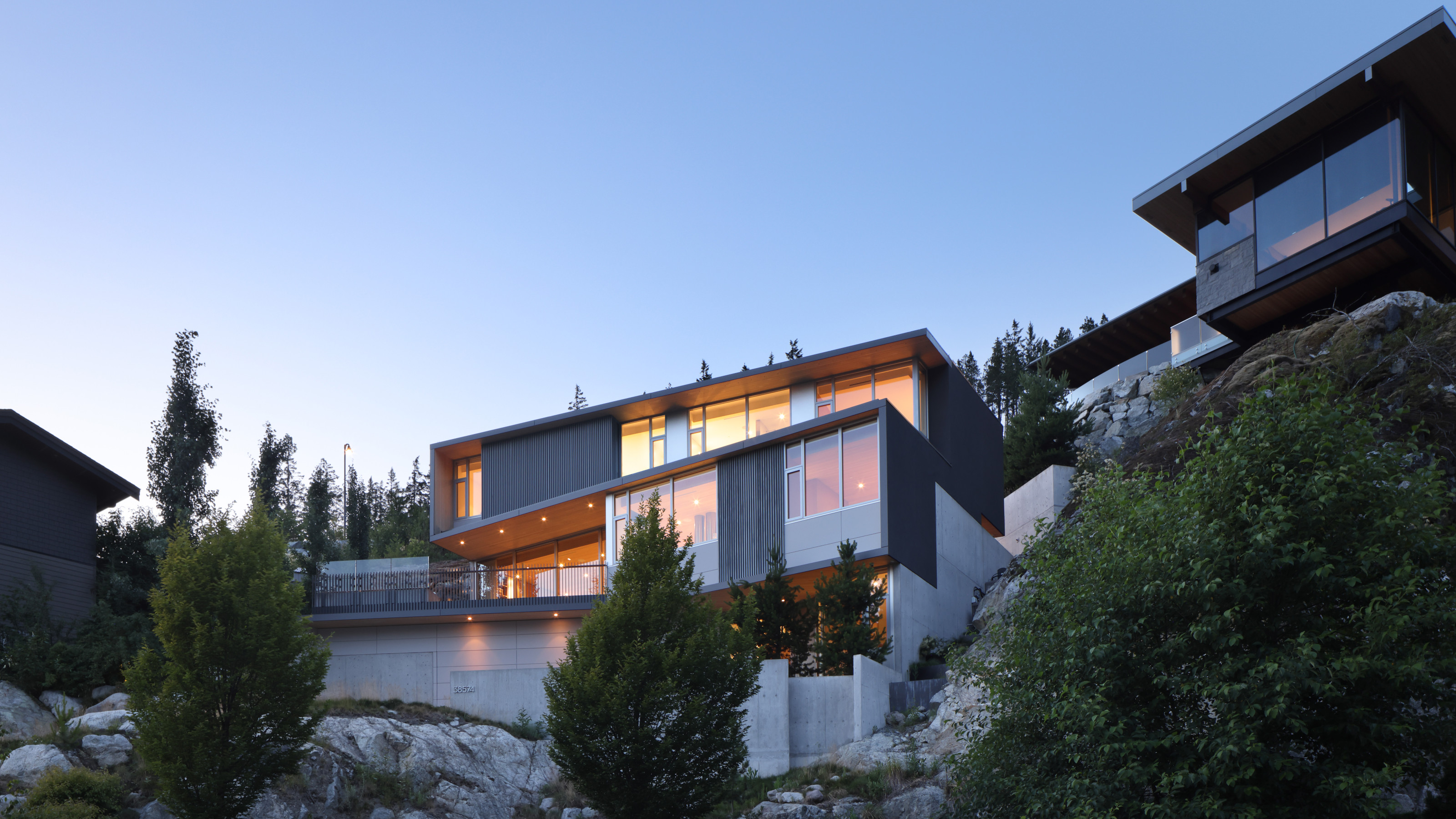 Buy yourself a Sanctuary, a serene house above the British Columbia landscape
Buy yourself a Sanctuary, a serene house above the British Columbia landscapeThe Sanctuary was designed by BattersbyHowat for clients who wanted a contemporary home that was also a retreat into nature. Now it’s on the market via West Coast Modern
-
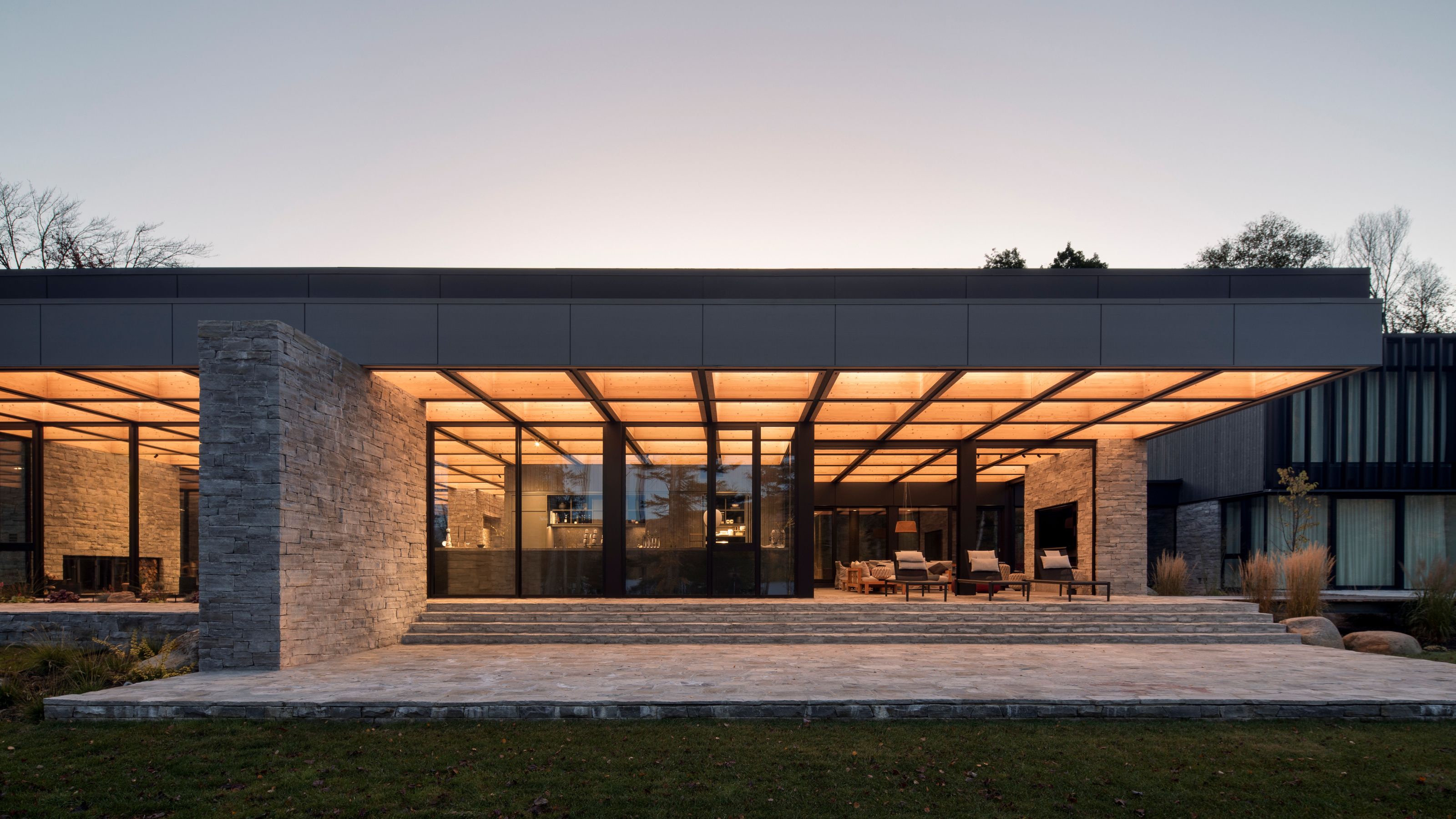 La Maison de la Baie de l’Ours melds modernism into the shores of a Québécois lake
La Maison de la Baie de l’Ours melds modernism into the shores of a Québécois lakeACDF Architecture’s grand family retreat in Quebec offers a series of flowing living spaces and private bedrooms beneath a monumental wooden roof
-
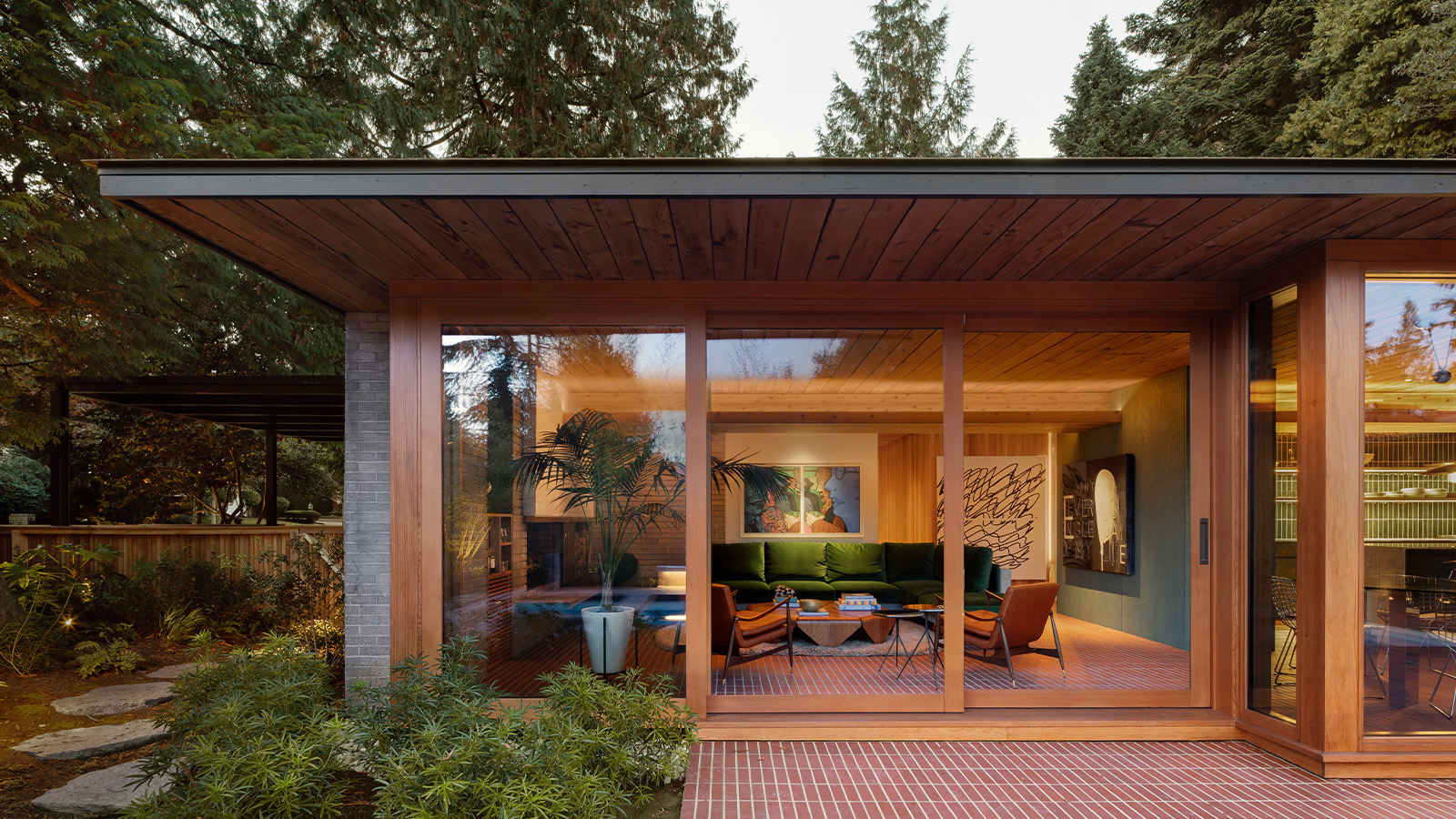 Peel back maple branches to reveal this cosy midcentury Vancouver gem
Peel back maple branches to reveal this cosy midcentury Vancouver gemOsler House, a midcentury Vancouver home, has been refreshed by Scott & Scott Architects, who wanted to pay tribute to the building's 20th-century modernist roots
-
 A spectacular waterside house in Canada results from a radical overhaul
A spectacular waterside house in Canada results from a radical overhaulSplyce Design’s Shoreline House occupies an idyllic site in British Columbia. Refurbished and updated, the structure has been transformed into a waterside retreat
-
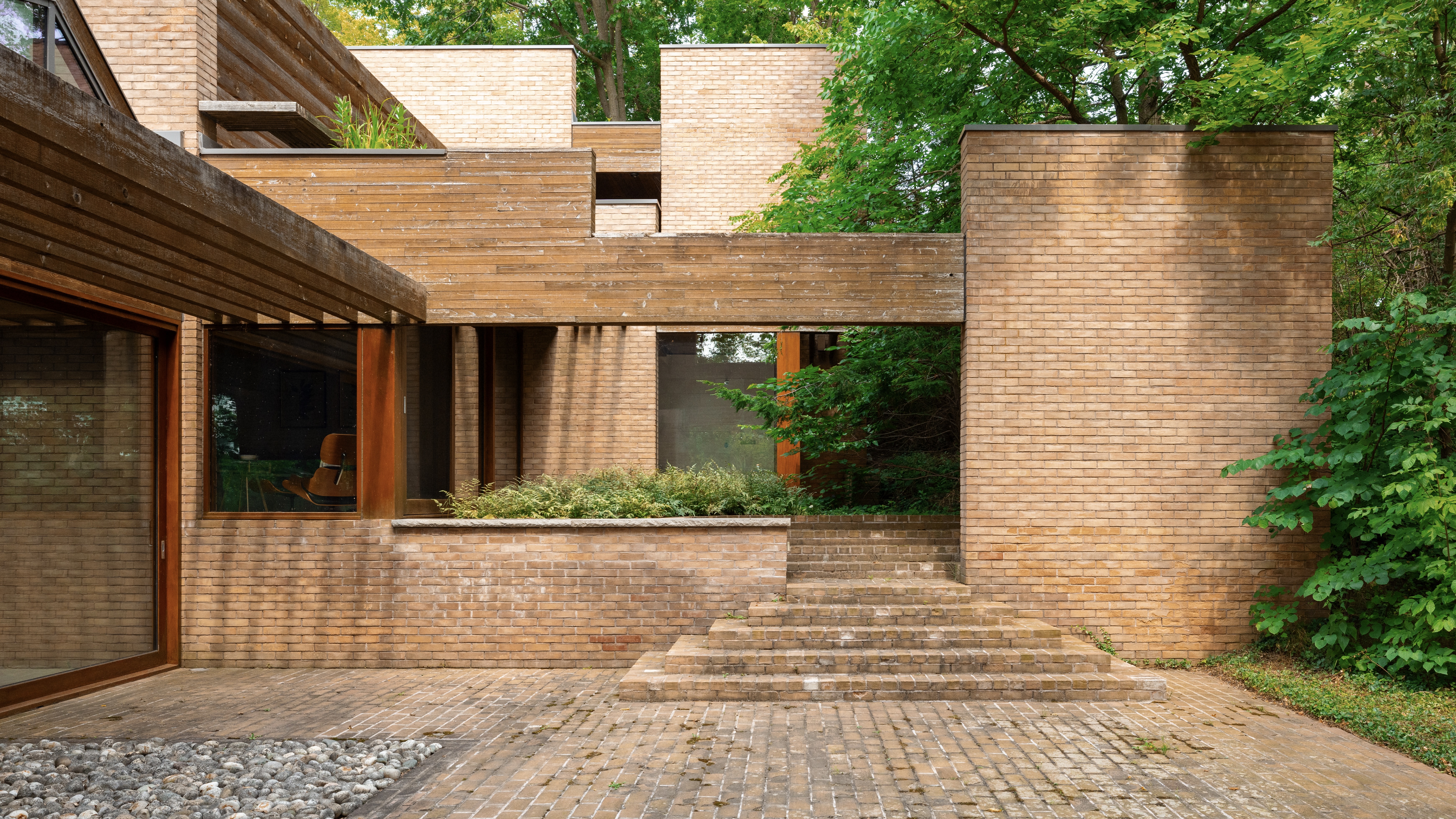 Hilborn House, one of Arthur Erickson’s few residential projects, is now on the market
Hilborn House, one of Arthur Erickson’s few residential projects, is now on the marketThe home, first sketched on an envelope at Montreal Airport, feels like a museum of modernist shapes, natural materials and indoor-outdoor living